RF test lab up to 20 GHz and higher
HP432 power meter + thermistor mount K486 (18-26.5 GHz) and R486 (26.5-40 GHz)
HP437B power Meter & 8481H sensor
EATON 2075B/205 noise gain analyzer up to 2000 MHz
HP 8350B sweep generator, 83592A RF plug-in 0.01-20 GHz
HP 8757A scalar network analyzer with power detector and directional bridge
SCHLUMBERGER 4002 signal generator up to 2160 MHz
Hantek DSO5202P digital oscilloscope
TEKTRONIX 494AP spectrum analyzer up to 21 GHz, with diplexer for external mixer up to 325 GHz
ADVANTEST R3261C spectrum analyzer up to 2.6 GHz
RACAL-DANA 1998 1.3 GHz frequency counter, up to 12.5 GHz with 10:1 prescaler
EIP 575/578 microwave frequency counter & power meter up to 26.5 GHz
I have a lot of smaller useful RF stuff. Some of these things are described below or under electronic projects
Equipment for microwave is very expensive. Also used equipment from the 80s/90s (eBay) is not cheap but affordable. In the last years (2017- ) more
and more cheap systems for microwaves based on a SDR are available and very helpful.
E.g. noise figure measurement system plus homemade noise source, vector and scalar network analyzer, handheld SDR with waterfall display,
signal generator/spectrum analyzer/tracking SA with Adalm Pluto, high frequency signal generator with GPSDO, ...
1. Noise source up to 18 GHz
Noise source with BAT14 diode. Current is less than 1mA and 100pF is ATC microwave capacitor.
I use a 23dB attenuator for 9-12dB ENR (30MHz - 12GHz).
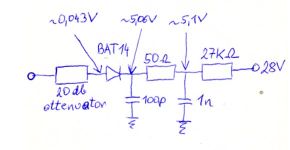
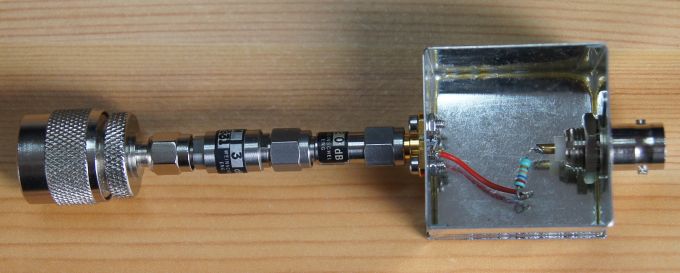
All parts are directly soldered on the back side of a SMA connector.
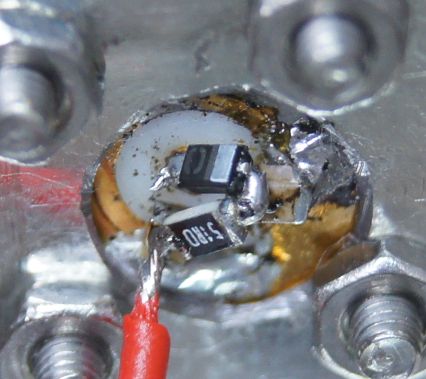
2. Maintenance of Eaton 2075B/205 noise gain analyzer
Eaton 2075B uses 4 mini SMA coax relays which are smaller than standard relays. As this relay has a lifetime of max. 1 million cycles its condition is more than bad after
the use of 20 years.
This relay is very hard to get and expensive. All 4 relays are hidden under 1st and 2nd local oscillator (very less space).
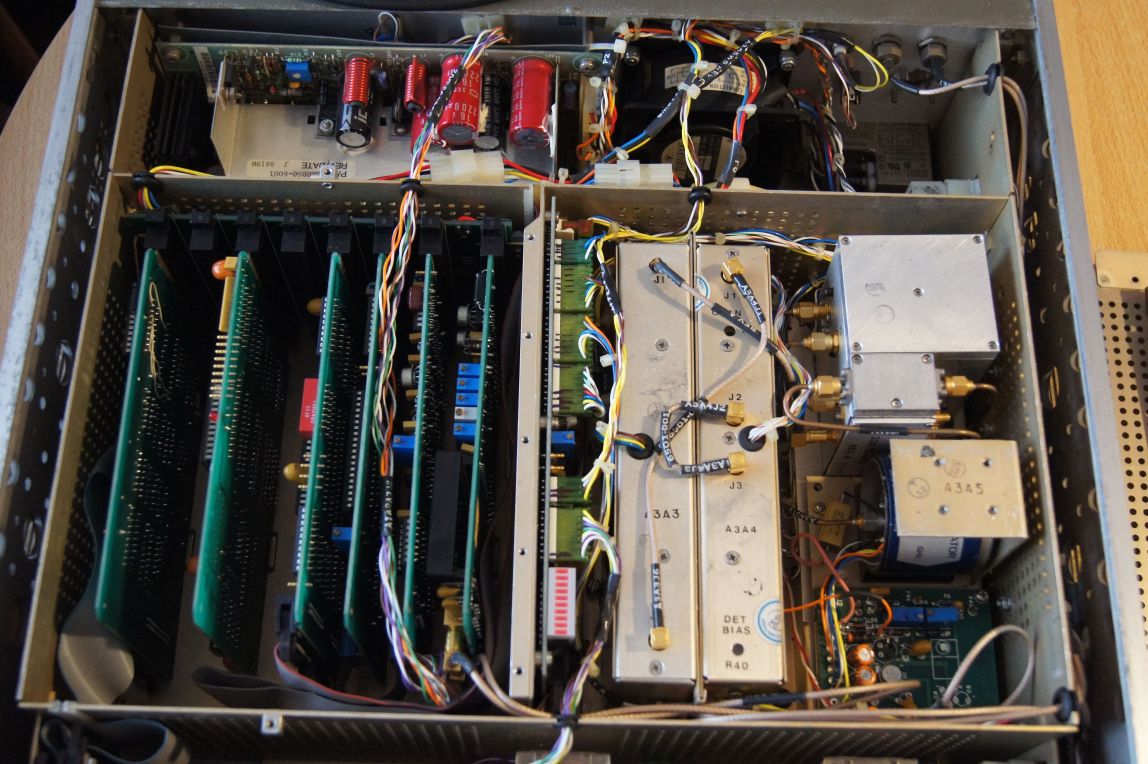
Therefore use 4 standard 28V SMA coax relays. 2 under the LOs and 2 are mounted outside of the inner box on the right side.
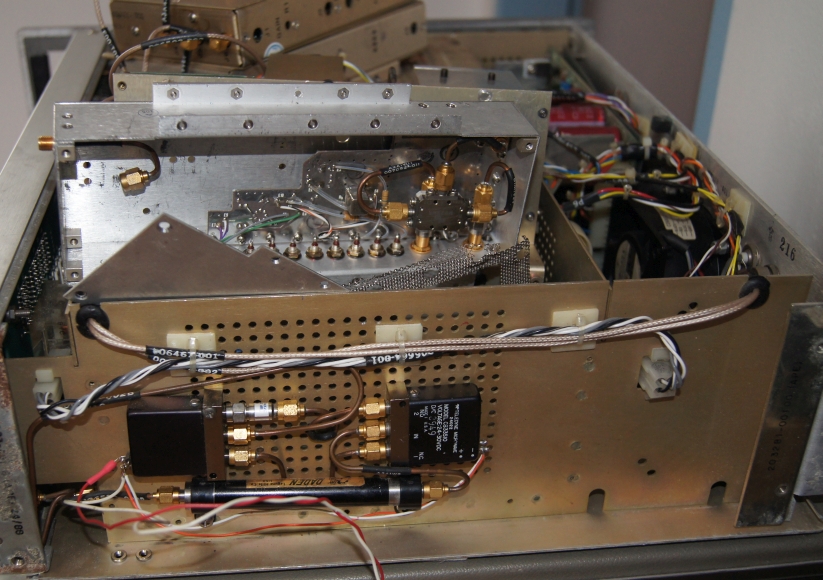
Another solution is this kit made by Pierre-Francois F5BQP to eliminate all 4 coax relais and input amplifier.
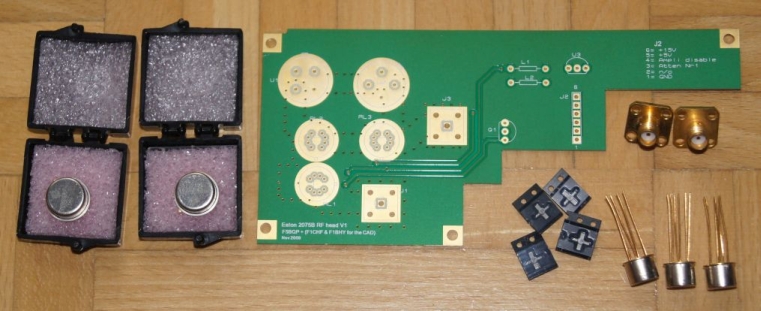
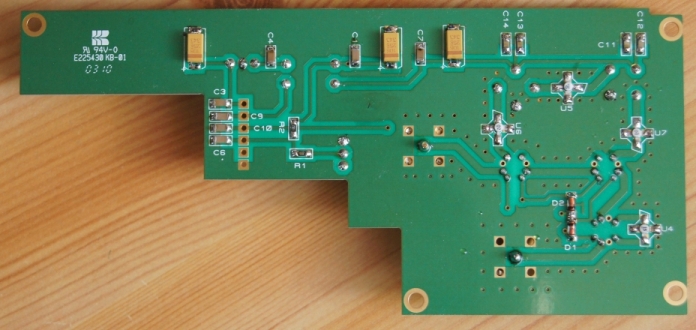
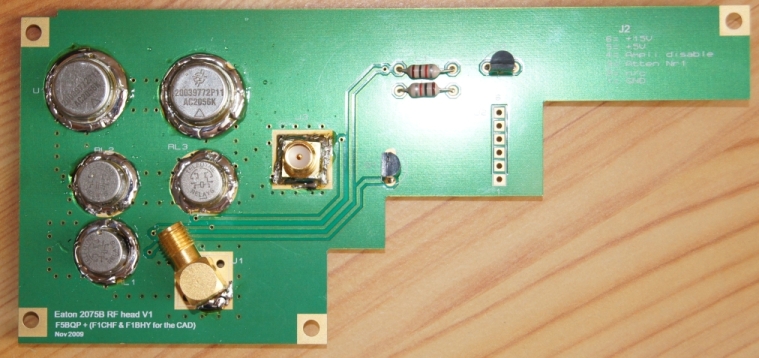
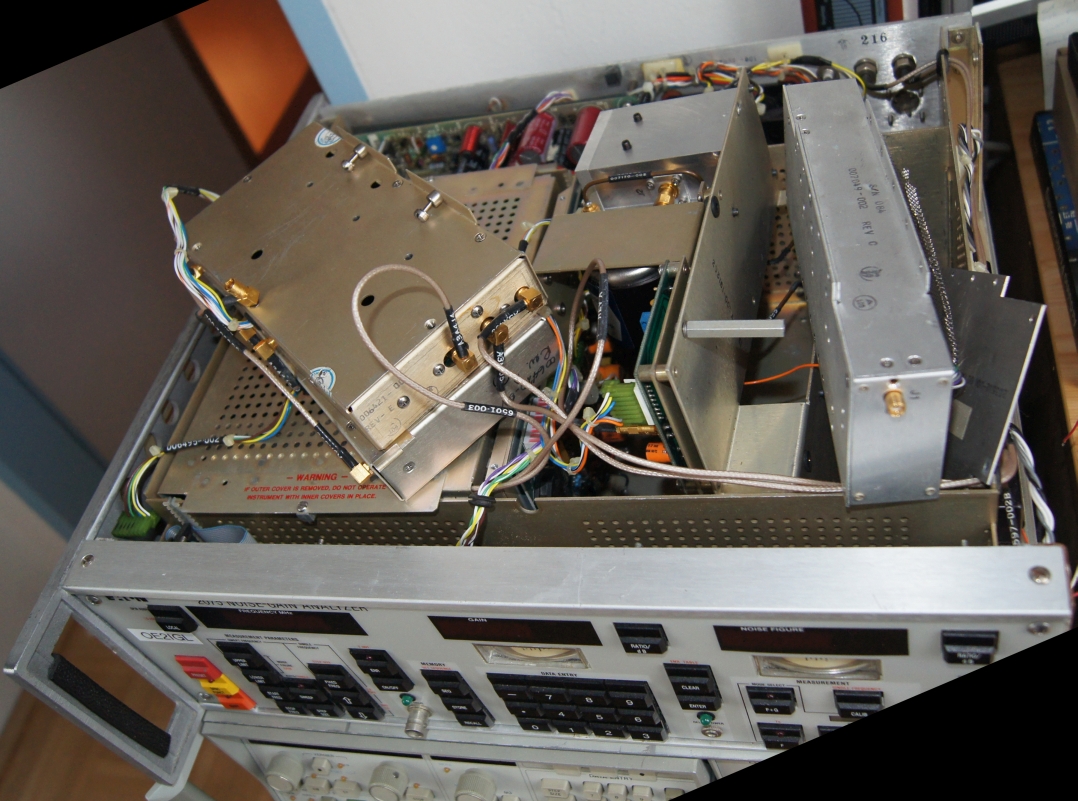
There is also an expired nonvolatile RAM on the CPU board but it is possible to use a DS1230AB-70 256k nonvolatile SRAM IC.
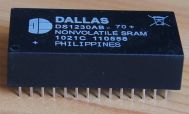
3. CANFI (cheap automatic noise figure indicator) up to 2000 MHz
3 ham radio operators (DL2ALF, DF9IC, DL8AAU) developed CANFI.
This system uses a DVB-T stick (RTL2832U) with a small software.
Pros and cons E4000 tuner chip:
+ frequency range from 54 - 2200 MHz, performance
with CANFI is perfect
- sold out, frequency gap between 1090 and 1250 MHz
Pros and cons R820T tuner chip:
+ cheap and still available
-
frequency only up to max. 1600 MHz, tricky to get best performance with CANFI
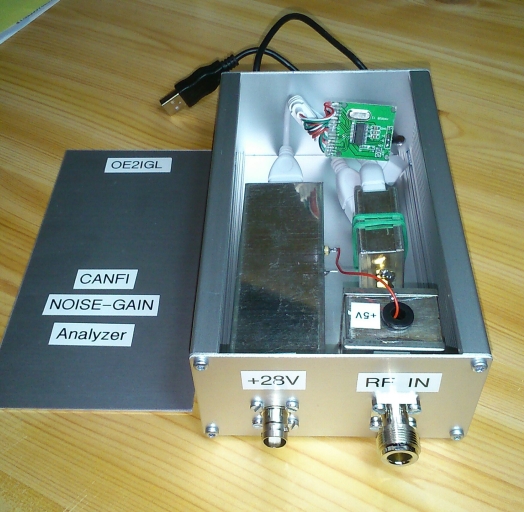
This is my version of CANFI (approx. 80?). In future RTL2832U with R820T chip
should work with new CANFI software version (ongoing tests).
- broad band preamplifier with DVB-T stick E4000
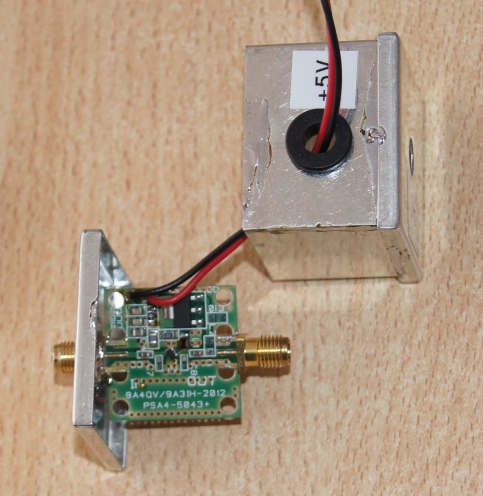
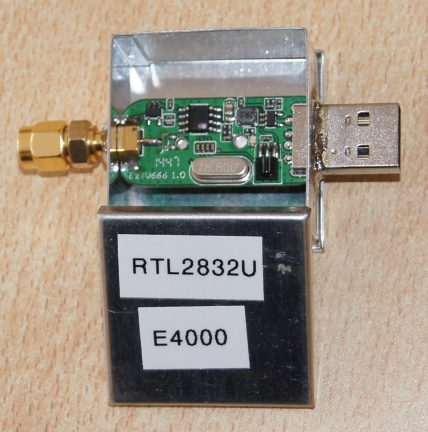
- USB/TTL converter, 5V -> 28V step-up converter and MOSFET switch for noise source
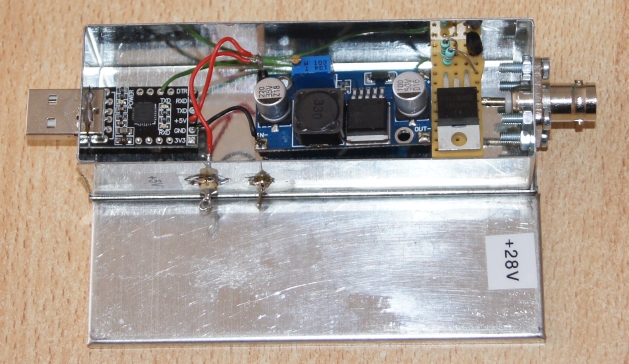
- 28V switch between RTS signal, 28V and noise source
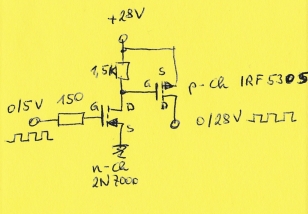
First DUT was a LNA4ALL preamp. Result was the same as with my EATOn 2075.
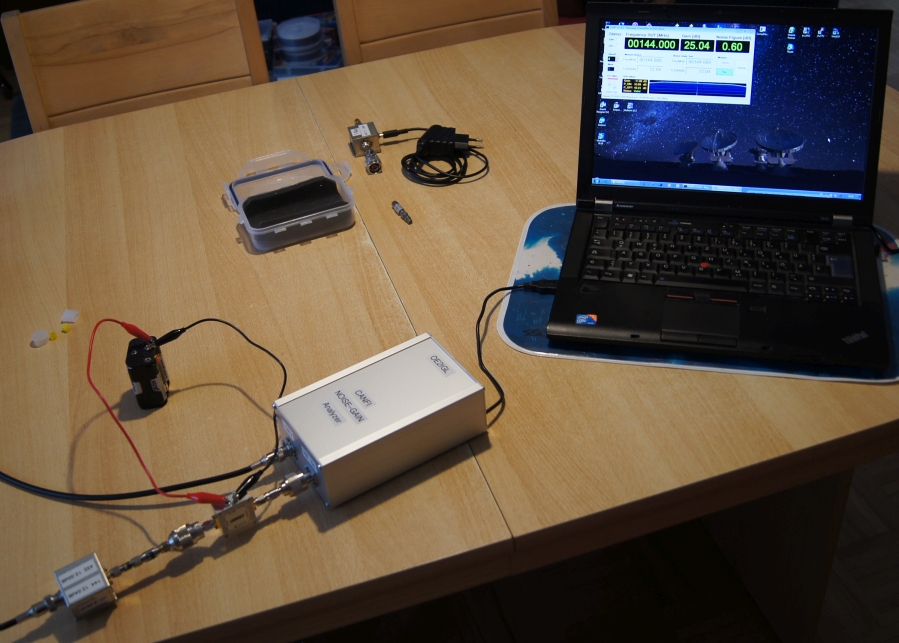
4. Low cost NanoVNA v2
NanoVNA is a low cost VNA (vector network analyzer) project up to 3 GHz. I bought the 4" display version with N connectors. There is also PC software available,
NanoVNA-SAVER and VNA-QT software.
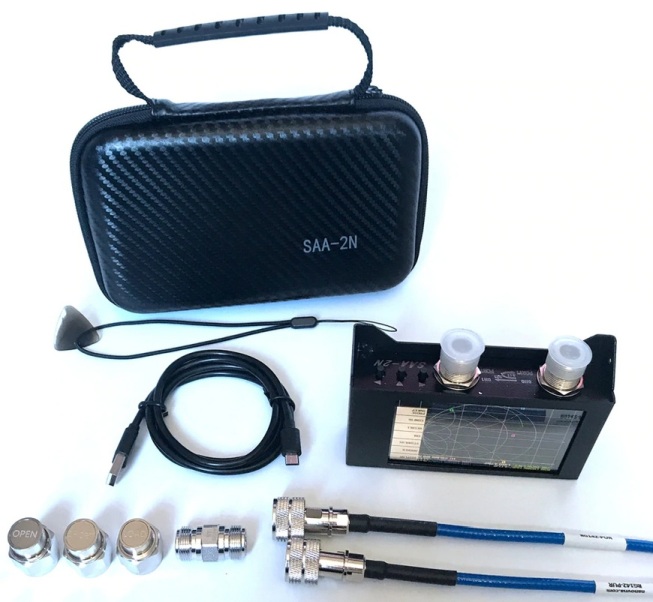
This is a 4 GHz version.
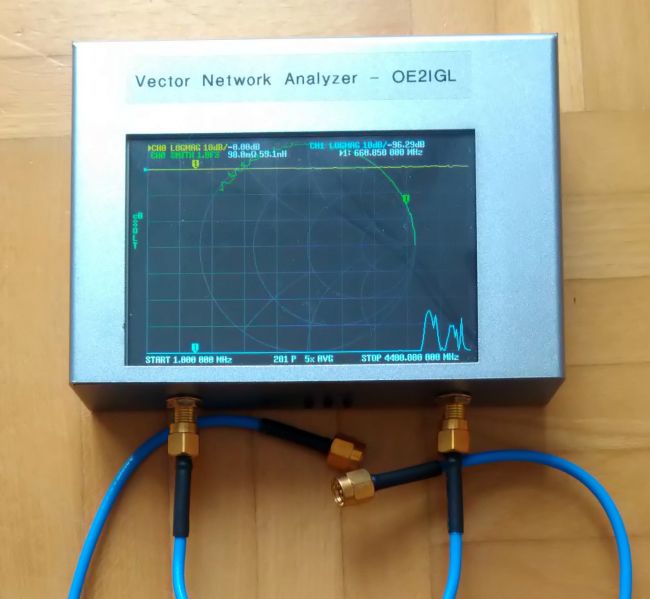
5. tinySA Ultra spectrum-analyzer
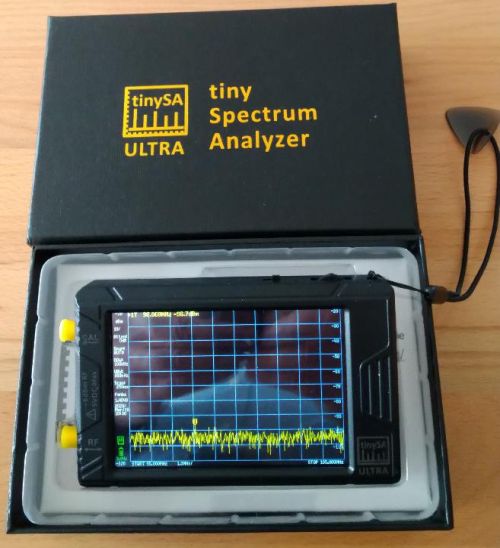
6. GPIB-to-USB converter
A GPIB-to-USB converter is very useful to control my RF test devices but professional converters are too expensive.
As
I have an Arduino UNO I tried this.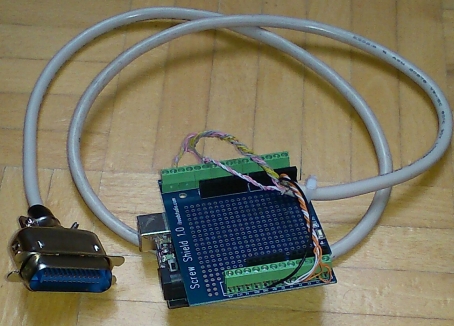
With this solution it is not possible to make screen dumps but to send commands to the device.
In
my opinion only a device from National Instruments is 100% compatible.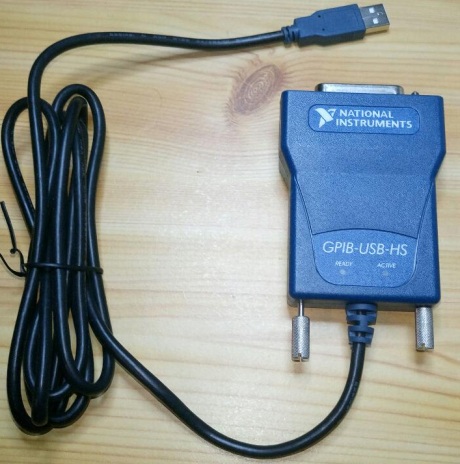
7. E- and H-field probe
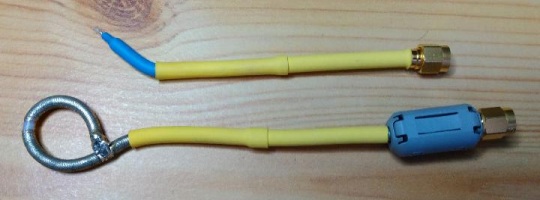
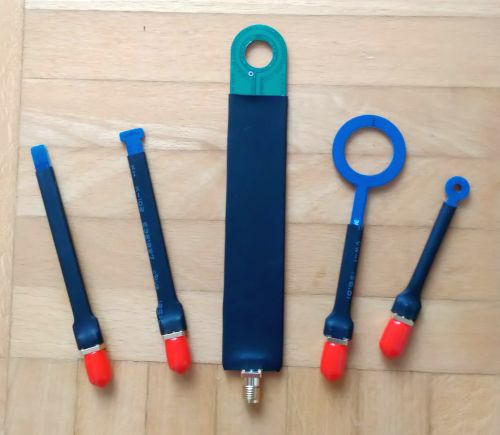
8. SDR Adalm Pluto and SATSAGEN software
Adalm Pluto is a SDR up to 6 GHz, see here.
SATSAGEN is a software by Alberto IU1KVL to control a Adalm Pluto, see here.
It consists of 3 applications, a Spectrum Analyzer, a Spectrum Analyzer with Tracking generator and a signal GENerator.
Spectrum analyzer extension up to 100 GHz:
In combination with a cheap amplifier (15 dBm output at 2 GHz), a diplexer with crossover frequency of 750 MHz and 24 or 37 GHz Alcatel harmonic mixer module it is
possible to reach up to 100 GHz with a Adalm Pluto.

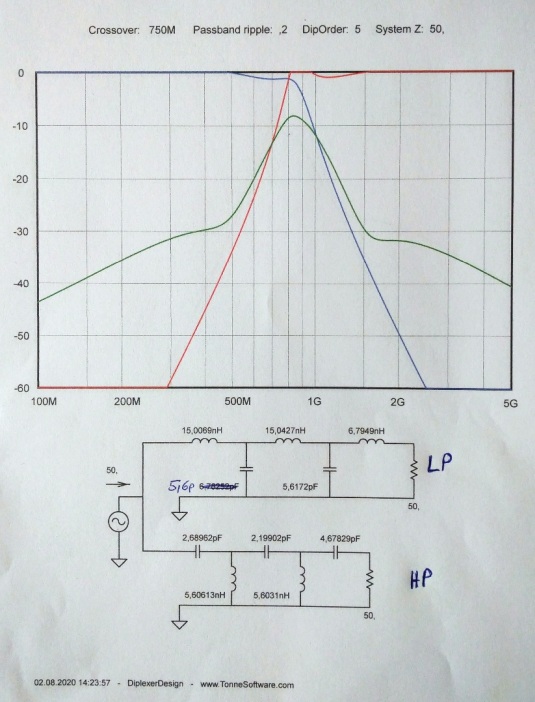
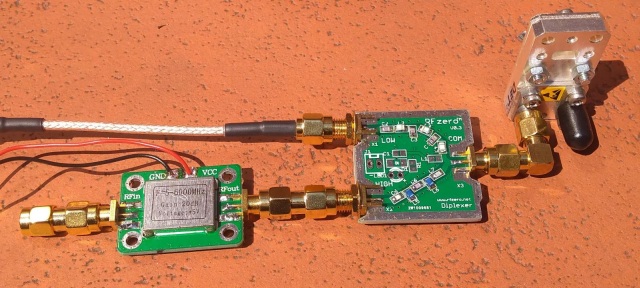
Diplexer: PCB is made by Bo (OZ2M). He has a shop.
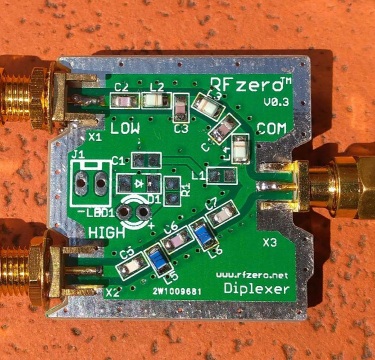
76 GHZ signal is clearly visible.
Spectrum analyzer frequency is 400 MHz.
Signal generator frequency is 3025.28 MHz.
400 + 28 * 3025.28 = 76032 MHz
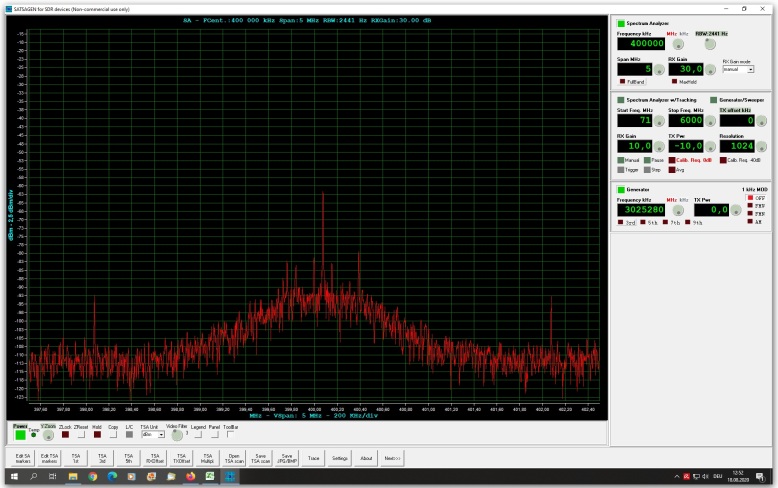
9. VNA up to 12 GHz with Pluto+ and SATSAGEN software
VNA up to 2 GHz:
A simple RF bridge is necessary.
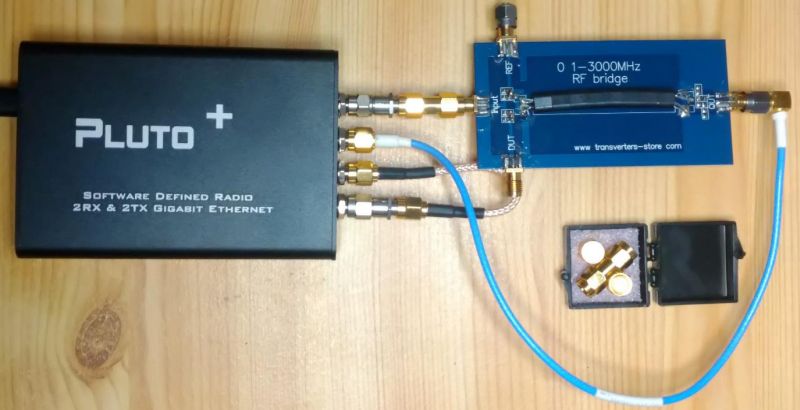
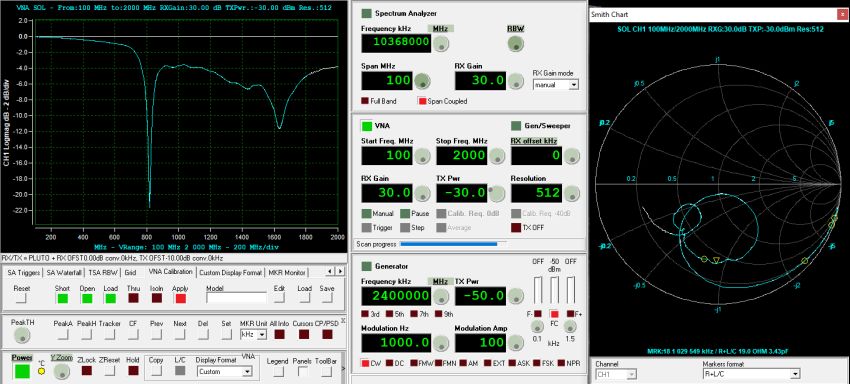
VNA up to 12 GHz:
For this a high quality directional coupler is necessary.